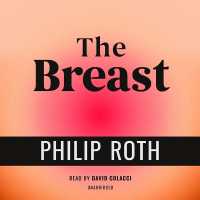- ホーム
- > 洋書
- > 英文書
- > Science / Mathematics
基本説明
Offers a new theory of how embryos build themselves, and combines simple physics with the most recent biochemical and genetic breakthroughs, based on their discovery of differentiation waves.
Full Description
The greatest mystery of life is how a single fertilized egg develops into a fully functioning, sometimes conscious multicellular organism. Embryogenesis Explained offers a new theory of how embryos build themselves, and combines simple physics with the most recent biochemical and genetic breakthroughs, based on the authors' prediction and then discovery of differentiation waves. They explain their ideas in a form accessible to the lay person and a broad spectrum of scientists and engineers. The diverse subjects of development, genetics and evolution, and their physics, are brought together to explain this major, previously unanswered scientific question of our time.As a follow up on The Hierarchical Genome, this book is a shorter but conceptually expanded work for the reader who is interested in science. It is useful as a starting point for the curious layman or the scientist or professional encountering the problem of embryogenesis without the formal biology background. There is also material useful for the seasoned biologist caught up in the new rush of information about the role of mechanics in developmental biology and cellular level mechanics in medicine.
Contents
How Embryogenesis Began in Evolution; Introduction to the Embryology and Anatomy of the Developing Axolotl; Embryology and Anatomy of Other Model Organisms; The Cell State Splitter; The Nuclear State Splitter; Embryo Physics, Step by Step; Embryogenesis and the Poverty of Physics: In Search of the Rainbow Connection; Google Embryo and the New Embryologist; Embryonics and Our Future.
-
- 洋書
- The Breast
-

- 電子書籍
- ココロマル - 絵本屋.com






